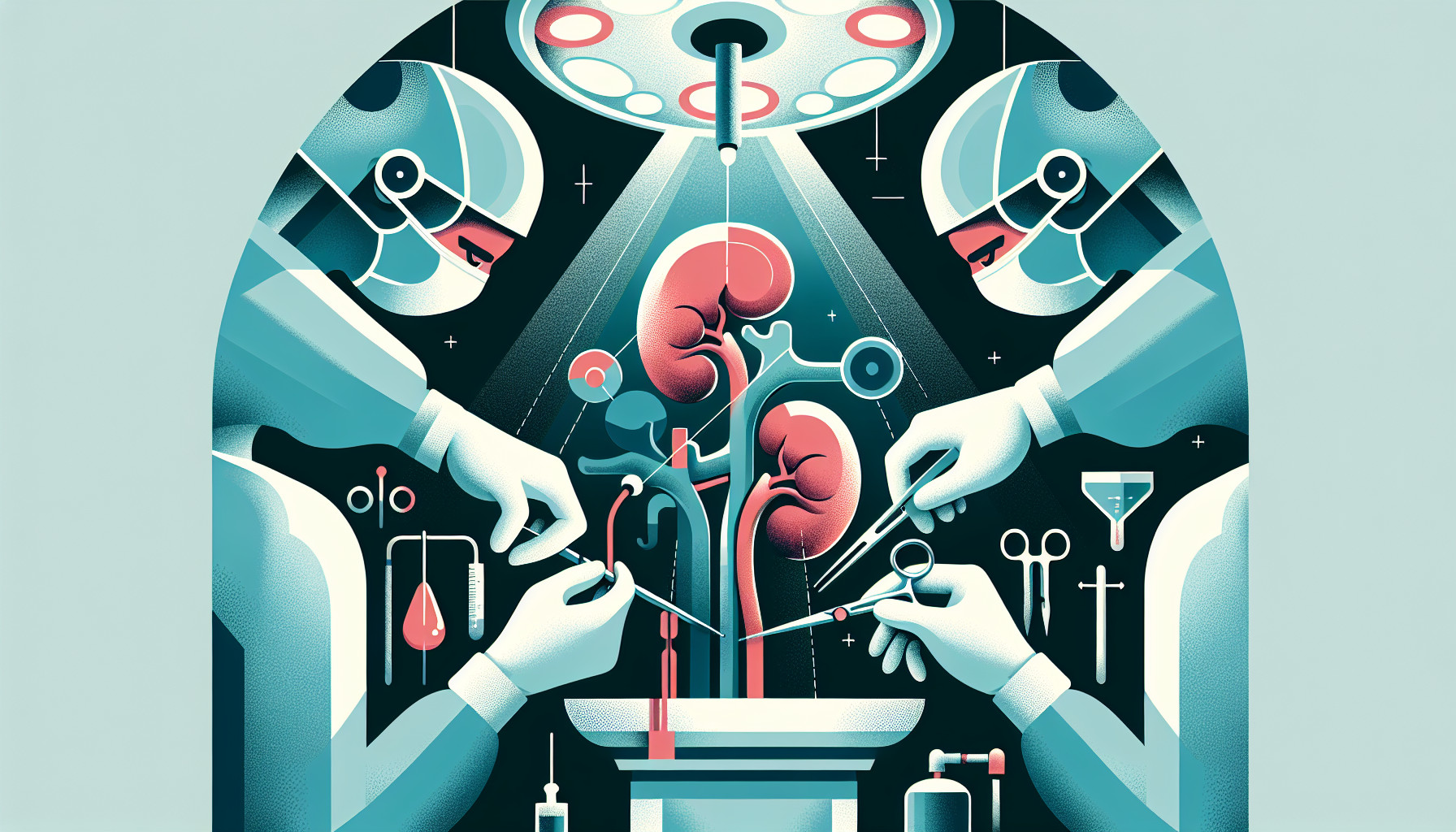Our Summary
This study looked at the use of a self-retaining barbed suture (SRBS) during a specific type of kidney surgery known as laparoscopic partial nephrectomy (LPN). The researchers were particularly interested in how the suture could affect the warm ischemia time (WIT), which is the period when blood flow is stopped and the organ is still at body temperature - a crucial factor for a successful operation.
They compared surgeries using the SRBS with those using other types of sutures. Their findings were based on one randomized controlled trial and seven retrospective studies, which included a total of 461 cases.
The researchers found that using the SRBS led to a shorter WIT and overall operation time, less blood loss, and better preservation of kidney function. There was no significant difference between the two methods in terms of complications during surgery or the length of hospital stay.
In simple terms, this study suggests that using the SRBS could make this type of kidney surgery quicker, safer, and more effective.
FAQs
- What is a self-retaining barbed suture (SRBS) and how was it used in this study on laparoscopic partial nephrectomy?
- What are the benefits of using an SRBS as found in the study?
- Did the use of the SRBS in the study affect the rate of complications during surgery or the length of hospital stay?
Doctor’s Tip
Therefore, a helpful tip a doctor might tell a patient about laparoscopic nephrectomy is that using a self-retaining barbed suture can potentially lead to better outcomes in terms of operation time, blood loss, and kidney function preservation. Patients can discuss this option with their surgeon to determine if it is appropriate for their specific case.
Suitable For
Patients who are typically recommended for laparoscopic nephrectomy include those with kidney cancer, kidney stones, kidney infections, or other conditions that affect the kidney. Laparoscopic nephrectomy is often recommended for patients who are relatively young, have a good overall health status, and have a smaller tumor size or early-stage disease. This minimally invasive procedure is preferred over traditional open surgery for its shorter recovery time, reduced pain, and lower risk of complications. However, the final decision on whether to undergo laparoscopic nephrectomy should be made by a healthcare provider after considering the individual patient’s specific medical history and condition.
Timeline
Before laparoscopic nephrectomy:
- Patient undergoes preoperative evaluation and testing to assess their overall health and suitability for surgery.
- Patient is informed about the procedure, potential risks, and benefits.
- Surgery date is scheduled and patient may need to follow specific preoperative instructions such as fasting.
- On the day of surgery, patient is admitted to the hospital and prepared for the procedure.
During laparoscopic nephrectomy:
- Patient is placed under general anesthesia.
- Surgeon makes small incisions in the abdomen and inserts a laparoscope and other specialized surgical instruments.
- The affected kidney is carefully disconnected from surrounding tissues and blood vessels.
- The kidney is removed through one of the incisions.
- The incisions are closed with sutures or staples.
After laparoscopic nephrectomy:
- Patient is monitored in the recovery room before being transferred to a hospital room.
- Pain medications and other supportive care are provided to manage postoperative discomfort.
- Patient may need to stay in the hospital for a few days for observation and recovery.
- Follow-up appointments are scheduled to monitor healing and kidney function.
- Patient may need to follow specific postoperative care instructions, such as avoiding heavy lifting and certain activities for a period of time.
What to Ask Your Doctor
Some questions a patient should ask their doctor about laparoscopic nephrectomy may include:
- How experienced are you in performing laparoscopic nephrectomy procedures?
- What are the potential risks and complications associated with this surgery?
- How will my recovery process be different compared to traditional surgery?
- Will I need any special preparation or tests before the surgery?
- How long will the surgery take, and how long will I need to stay in the hospital?
- What are the expected outcomes of the surgery in terms of kidney function and overall health?
- Will I need any follow-up appointments or tests after the surgery?
- Are there any alternative treatment options available for my condition?
- How will the use of a self-retaining barbed suture (SRBS) during the surgery affect my recovery and overall outcome?
- Are there any specific lifestyle changes or precautions I should take after the surgery to ensure a successful recovery?
Reference
Authors: Zhan H, Huang C, Li T, Yang F, Cai J, Li W, Mao Y, Zhou X. Journal: Surg Innov. 2019 Dec;26(6):744-752. doi: 10.1177/1553350619856167. Epub 2019 Jun 19. PMID: 31215335
